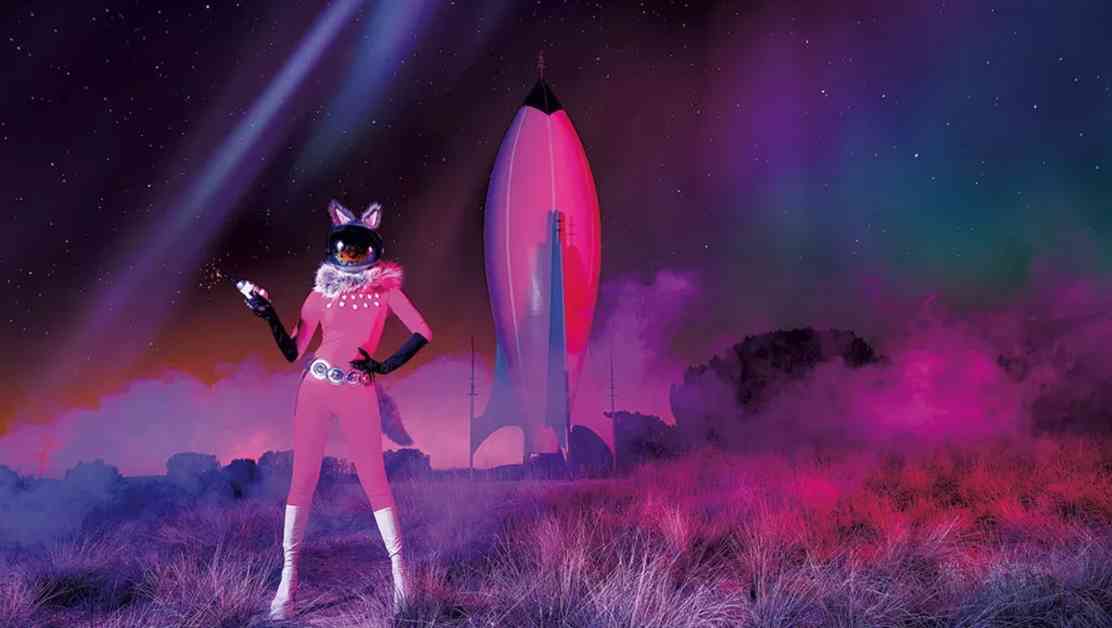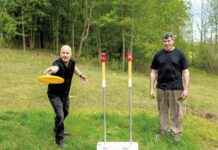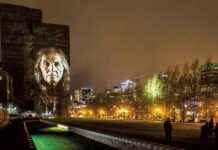Cara Romero’s Photography Exhibition Captivates Audiences at Hood Museum
The vast desert landscapes often elude the camera’s lens, their scale and complexity too grand to be captured in a single frame. However, Cara Romero, a talented Indigenous photographer hailing from the Chemehuevi Reservation in the Mojave Desert, takes on this challenge with her latest exhibition at the Hood Museum of Art in Hanover, N.H.
Entitled “Panûpünüwügai (Living Light),” Romero’s showcase features over 60 striking photographs that delve into themes of time, space, identity, and the environment. As visitors step into the gallery, they are transported into a world where Indigenous individuals, both real and mythical, exist in a realm that transcends time and space.
Romero’s deep connection to the Chemehuevi Valley is evident in the series of works that open the exhibition. Four young boys, dressed in precolonial attire but existing in contemporary times, take center stage in pieces like “Jackrabbit and Cottontail.” Here, the boys embody figures from myth who shaped the Earth and the stars, juxtaposed against their modern surroundings. It’s a powerful commentary on the enduring presence of Indigenous cultures in the face of changing landscapes.
Fluidity of Time and Space
One of the most compelling aspects of Romero’s work is her ability to blur the lines between people and the landscape, history and the future. In “Evolvers,” a monumental piece created for the 2019 Desert X biennial, the boys are seen fleeing from a field of wind turbines, symbolizing the intertwining of ancestral spirits with modern-day environmental challenges. It’s a poignant reminder that our ancestors are still present in the land around us, witnessing its transformation.
Moving through the exhibition, viewers encounter a section titled “Reimagining Americana,” where Romero cleverly inserts Native American actors and artists into familiar pop culture settings. In “The Last Indian Market,” she playfully reinterprets Da Vinci’s “The Last Supper,” replacing the apostles with prominent Indigenous figures. This subversion of stereotypes and tropes challenges viewers to reconsider how Native Americans are depicted in mainstream media.
Empowering Indigenous Voices
Romero’s celebration of Indigenous identity takes center stage in the series “First American Dolls,” where she envisions individuals from diverse Indigenous cultures as American Girl Dolls. Each photograph tells a story of cultural pride and resilience, reclaiming narratives that have long been shaped by outsiders. In “Wakeah,” the exquisite craftsmanship of a Kiowa/Comanche artist’s traditional outfit is juxtaposed with the commercialized image of a doll, highlighting the complexity of Indigenous representation.
The photographer’s focus on women in her work brings a unique perspective to the exhibition, from goddess-like figures to a fictional roller derby team. In “Kaa,” Romero envisions potter Kaa Folwell as the deity Clay Woman, a powerful symbol of creativity and resistance. Through striking visual imagery, she challenges the notion that Indigenous women can be neatly packaged or confined, asserting their agency and autonomy.
As visitors reach the final room of the exhibition, they are greeted by “Ancestral Futures,” a series of sci-fi-inspired images that blend Indigenous mythos with a futuristic aesthetic. In “Devil’s Claw No. 1,” a mysterious figure holds a sphere containing a desert plant, reminiscent of iconic tech ads. The whimsical yet thought-provoking pieces in this section invite viewers to contemplate the intersection of tradition and innovation, past and future.
In the midst of the grandeur and spectacle of Romero’s exhibition, it’s the quieter moments that resonate the most. In “Crickett,” a portrait of her daughter, the artist captures a timeless essence that transcends generations. The vulnerability and strength in her daughter’s gaze mirror the resilience of Indigenous communities throughout history, staring back at viewers with a sense of accusation and knowing.
From the vast desert landscapes to the intimate portraits of individuals, Cara Romero’s photography exhibition at the Hood Museum is a testament to the enduring spirit of Indigenous cultures. Through her masterful storytelling and evocative imagery, she invites viewers to embark on a journey through time, space, and identity, leaving them with a deeper appreciation for the richness and diversity of Indigenous experiences.









